It’s all about the (writing) accessories!
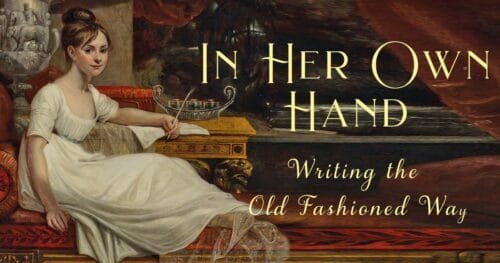
When we think about writing accessories today, we think of fancy papers, ink in pretty colors (and sometimes fragrances), lovely notebooks, and maybe cute little doo-dads to sit on the desk. The accessories gracing a Regency Era desk were very different and some performed functions largely unnecessary today.
Paper knives
In addition to the ubiquitous pen knife for quills, paper knives were common on Regency Era desks. The ancestor of the modern letter opener (which was not needed in the Regency era since envelopes were not used), paper knives were used primarily for trimming the folds of book and magazine pages.

During the Regency Era, paper was made in very large sheets. Printing presses printed multiple pages at one time on those large sheets, which were then folded down to put the pages in the right order and orientation for the publication. Before binding, the folds were trimmed away. However, some folds inevitably escaped the trimmer, requiring the reader to trim the folds themselves with a paper knife.
At first pen knives were used for this purpose, but their short, sharp, and difficult to control blades often tore pages or left jagged edges in its wake. Long, smooth, blades with rounded edges worked better to cut the weakened paper fibers along the pages’ folds. Thus, the paper knife was born.
As noted in a previous post. Paper for home use was usually purchased in very large sheets and trimmed down to the needed size at home. Another job for the trusty paper knife.
Ivory, bone, and mother of pearl and polished hard woods made the best paper knives, though brass and silver were often used as well. Although the blade needed to be smooth, handles were often intricately decorated, reflecting the taste of the owner.
Rulers
Once a sheet of paper was trimmed down for use, The Young Man’s Best Companion and Guide to Useful Knowledge (Dougall, 1815) recommends:
In ruling the paper for writing, the close marks of the wires used in the manufacture of the paper and the open lines running across them, will be of great service : but the beginner should not trust implicitly to this help : he should mark off, with a pair of compasses, on the margin of the paper, a number of points, at regular distances, and through them draw light pencil lines, within which the writing must be confined. At first compasses and a plain flat ruler are to be employed; because by them the lines are drawn with the greatest accuracy: but when the writer’s eye is more experienced, he may judge of the distance to be left between the lines, without using compasses; and then for expedition’s sake, employ a round ruler, which ought to be perfectly cylindrical, that is of precisely the same thickness in every part of its length.
Dougall, 1815
So rulers, plain, parallel, and round, as well as compasses or dividers were required desk accessories to assist on in producing the most attractive penmanship possible.


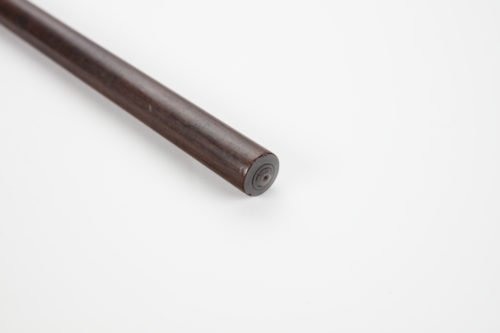
Pounce and pounce pots
Once a page was finally written, yet another desk accessory came into play, the pounce pot. Very occasionally in using a modern ball point pen, we encounter a blob of ink that smears if touched. Quill pens, using liquid inks, though, produced a page of wet ink prone to smudge and smear if touched before thoroughly dry.
To speed along the process, pounce, a fine powder made of powdered cuttlefish bone or gum sandarac resin, would be lightly sprinkled over the wet ink. Though the powder was often poured back into the pounce pot or sander after it was used, traces of the pounce frequently remained, giving letters a gritty quality and desks and table a layer of grime that could be quite disagreeable.
Pounce pots were often very decorative and sold in sets inkstand sets which included matching ink wells, wafer boxes, wax jacks, and pen stands. Not unlike the sort of desk accessories we enjoy today.
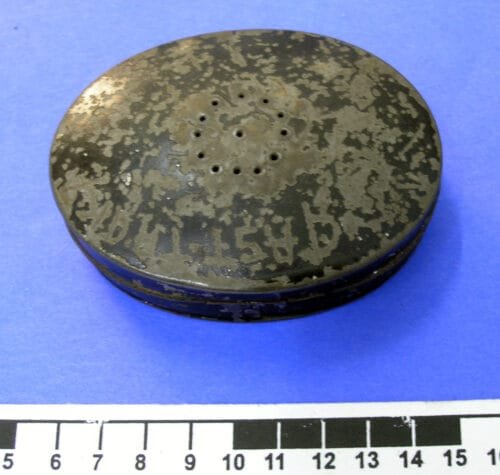
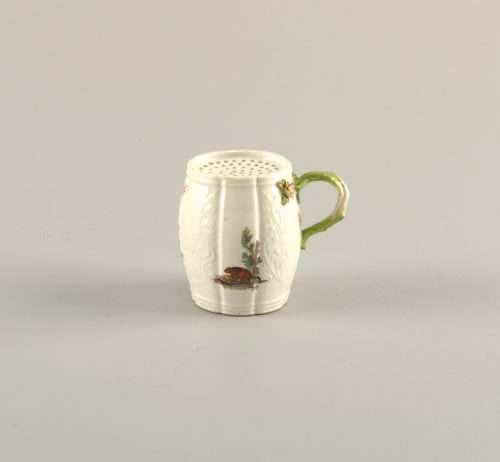
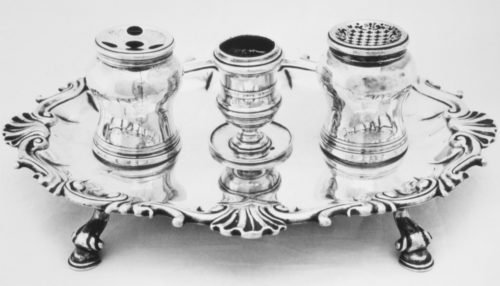
Once a letter was written and the ink dry, all that remained was to fold and seal the letter and get it into the mail. Next time we’ll explore how wafers and seals enabled private correspondence before the days of gummed envelopes.
Find more on the art of writing here.
Find out more about the British Post here.
Find out more about letter writing here.
References
Ashbridg. Sand Used Instead of Blotting Paper. The Fountain Pen Network. May 30, 2010. Accessed 12/10/2022. https://www.fountainpennetwork.com/forum/topic/156685-sand-used-instead-of-blotting-paper/
Dougall, John. The Young Man’s Best Companion and Guide to Useful Knowledge. Kinnersley: Bungay. 1815
Hurford, Robert. Handwriting in the Time of Jane Austen. PERSUASIONS ON-LINE V.30, NO.1 (Winter 2009). Accessed 11/28/22. https://jasna.org/persuasions/on-line/vol30no1/hurford.html
Kane, Katheryn. A Paper Knife was not a Letter Opener. The Regency Redingote. May 24, 2013. Accessed December 12, 2022. https://regencyredingote.wordpress.com/2013/05/24/a-paper-knife-was-not-a-letter-opener/
Kane, Katheryn. Of Inkstands and Standishes. The Regency Redingote. February 16, 2018. Accessed December 12, 2022. https://regencyredingote.wordpress.com/2018/02/16/of-inkstands-and-standishes/
Macdonald, Grant. The Remarkable Secret History of the Paper Knife. Grand Macdonald. September 15, 2020. Accessed May 20, 2023, https://grantmacdonald.com/blogs/blog/the-remarkable-secret-history-of-the-paper-knife.
Tools for Writing Well. Her Reputation for Accomplishment. January 28, 2015. Accessed 11/14/2022. https://herreputationforaccomplishment.wordpress.com/2014/06/16/the-pen-in-penmanship/

Comments
It’s all about the (writing) accessories! — No Comments
HTML tags allowed in your comment: <a href="" title=""> <abbr title=""> <acronym title=""> <b> <blockquote cite=""> <cite> <code> <del datetime=""> <em> <i> <q cite=""> <s> <strike> <strong>